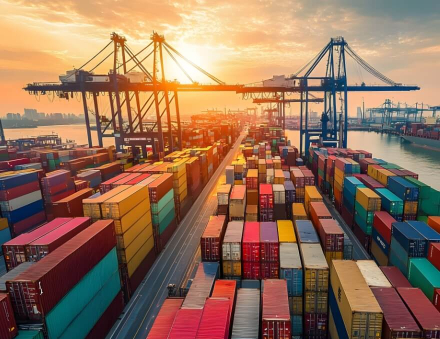Optimizing Supply Chains Amid Disruptions
In retail, competition is fierce. Additional challenges brought on by the pandemic and humanitarian conflict have increased the disruption, cost, and complexity of keeping consumers supplied.
With the ongoing turmoil exposing vulnerabilities in supply chains, many businesses have started viewing technology as a significant source of competitive advantage. In a 2022 survey by Ernst & Young LLP (EY US)[i], 64% of supply chain executives stated that digital transformation would accelerate due to the pandemic.
While the need for relevant technology is apparent, some businesses hesitate to make the switch. This is mainly due to the costly and time-consuming process of covering all the bases of business readiness: data availability, stakeholder engagement, onboarding new processes, and managing business change that could allow new digital technologies to thrive and deliver. However, the potential long-term benefits far outweigh these demands.
As we start another significant transformation project with a major retailer, I reflect on how we are helping supply chains to be more successful. It is all about ensuring three core areas of relevance which, done well, can achieve improvements of 5% to 15% reduction in operating costs and improve levels of fulfilment and waste.
Relevance to the Business
Many retailers are using outdated and inflexible software. Implementing powerful planning and optimization capabilities configured to the modus operandi of each business rectifies these flaws. Precise business rules and logic established within the system can allow for a “perfect fit” and support planners in finding the best strategy to move forward. Removing workarounds and misfits, a true digital twin reflects reality in new planning capabilities that align operational decision-making to corporate strategy.
Relevance to Stakeholders
Disparate and fragmented supply chain planning means that stakeholders across the supply chain struggle to share and execute plans. Since there is no single version of the truth, supply chain optimization becomes lost between planning and execution. Ultimately, this leads to cost buffers, failures, and missed potential. A fully connected Supply Chain Planning & Optimization platform allows full compliance and alignment between transport and warehouse and between planning and execution teams, retaining optimal results throughout the process.
Relevance to Data
Publish and pray is increasingly ineffective in generating a plan at one point in time and hoping it remains viable. This rings especially true in a competitive environment, and only retailers that constantly detect and adapt to ever-changing needs will be the ones that come out on top. When the plan does not align with changing reality, operations will find quick fixes to ‘get the job done.’ But without the right tools, the final results are rarely optimal, leading to excessive cost overheads. The way to prevent this is to ensure that the plan always remains relevant to the data received. Achieving this in the new normal requires propagating all new information throughout the plan with continuous real-time optimization 24×7 to allow it to react and adapt to any situation, thus offering complete control over the supply chain life cycle.
How The Logic Factory Can Help
Creating and maintaining a robust, agile, and efficient supply chain to navigate a world of disruption is possible when the right stakeholders have the right tools.
The Logic Factory applies 15 years of expertise in supporting major organizations in making the right decisions to help define and implement transformational capabilities in the supply chain.
From defining and aligning the supply chain vision and how to get there, winning stakeholder engagement, determining business and data readiness for new supporting technologies, and scoping business value, we’re here to assist.
If you are interested in finding out more, contact us via info@thelogicfactory.com.






